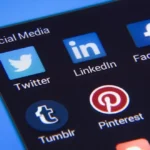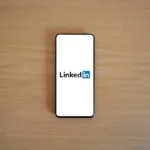So, I was chatting with Skye the other day, and we got completely lost down the rabbit hole of event promotion on X (formerly known as Twitter, of course!). Skye’s always been a bit of a marketing whiz, so I was keen to pick her brains, particularly on how to cut through the noise and actually generate new business using the platform. We weren’t just talking surface level stuff, we were diving deep into how to use X for genuine engagement and lead generation, all while keeping event marketing best practices at the forefront. The topic was ‘X-Enhanced Event Promotion and Engagement’, how to effectively engage and create new business opportunities, so here’s what we hashed out.
First things first, Skye emphasized the crucial point: understanding your audience. It’s not enough to just shout about your event into the void. You need to know who you’re talking to. She suggested segmenting your potential attendees based on their interests, job roles, or even their past interactions with your company. Think about it: a CTO looking for cutting-edge tech is going to be interested in different aspects of your event than a marketing manager focused on lead generation. This level of understanding is very important when using a platform such as X and needs to be considered for all types of marketing campaigns.
“Okay, but how do I actually do that on X?” I asked. Skye’s response was surprisingly simple. “Hashtags are your friend!” she exclaimed. Create specific hashtags for different tracks or themes within your event. Encourage attendees to use these hashtags when posting about their sessions of choice. You can then monitor these hashtags to identify individuals with particular interests and tailor your messaging accordingly. Tools like X analytics can also help you track hashtag usage and identify key influencers within specific segments. Skye also mentioned list segmentation within X is underrated. Organise your audience based on the data you can obtain and this helps create highly personalised experiences.
Next, we tackled the art of delivering targeted content. Skye stressed the importance of going beyond generic event announcements. “Think about the value you’re offering to each segment,” she said. “Are you highlighting keynote speakers relevant to their industry? Are you sharing case studies that address their specific pain points?” Instead of one-size-fits-all tweets, craft tailored messages that speak directly to the needs and interests of each group. Skye gave a great example: if you have a session on AI in healthcare, target tweets about that session specifically to users who follow healthcare-related accounts or use relevant hashtags. It sounds obvious, but the attention to detail makes a world of difference.
We also discussed the power of recommendations and facilitated connections. X isn’t just a broadcasting platform; it’s a social network. Skye suggested using X to connect attendees with like-minded individuals. “Imagine if you could automatically suggest relevant connections to attendees based on their declared interests or session attendance,” she said. This could involve creating dedicated X lists for different segments, encouraging attendees to follow each other, or even organizing virtual meetups within X Spaces. The goal is to foster a sense of community and create opportunities for networking that extend beyond the physical event.
Skye then went on to discuss the importance of engagement. It wasn’t enough to post the right things, but you had to monitor the content and respond. Skye said “Use X to solicit feedback from attendees and improve future events. Use X to stream portions of the event to a wider audience. Utilise X Spaces for interactive Q&A sessions with speakers or panellists.” All this activity, even after the event, improves your chances of converting people and generating new business.
Finally, we talked about measuring success. It’s all well and good to implement these strategies, but how do you know if they’re actually working? Skye emphasized the importance of tracking key metrics like hashtag usage, engagement rates, website traffic from X, and lead generation from X campaigns. “Don’t be afraid to experiment and iterate,” she said. “What works for one event might not work for another. The key is to constantly analyze your data and adjust your strategy accordingly.”
Essentially, using X for event promotion is about understanding your audience, speaking directly to their needs, facilitating connections, and constantly measuring your results. It’s about turning X from a broadcasting platform into a powerful engine for engagement and new business. By carefully segmenting your audience, crafting targeted content, and fostering a sense of community, you can unlock the full potential of X and create truly impactful event experiences. The key takeaway is that X needs to be a constant project that improves as the event date draws nearer and the event concludes.











